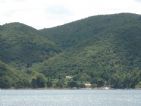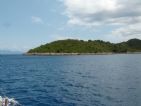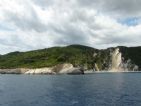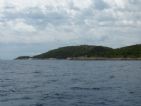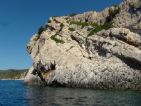
Desde Ayos Andreas a Skotariá
Los Informes de Comparación están bajo licencia de:

Lo que dice el Arxiduc:

Luego viene la bahía de Skino, ancha y bonita, rodeada de colinas. En el fondo hay pequeños valles principales. Olivos crecen en la falda hasta la costa. Dentro del valle a la izquierda hay dos casitas. Se forma un cuenco doble, a la derecha cubierto de viñas hasta el mar y a la izquierda con olivos y viñas. Los dos cuencos tienen una pequeña playa de piedras. Las faldas están cubiertas por arbustos bajos, normalmente de Ufanna; matorrales se encuentra pocas veces. Las costas están rocosas y en medio, entre los dos cuencos principales, hay algunas capas inclinadas.
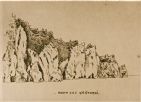
Datos proyecto Nixe III:
Una vez que dejamos Ayos Andreas, sigue la bahía de Skinos. Podemos ver asimismo el cabo que la cierra por el este.
Seguimos rumbo hacia el sur y vemos algunos escollos antes de llegar a Gydaki. Tomamos una imagen de la punta de Gydaki. En la parte alta por encima de la punta se ve un camino desde el que el Archiduque dibujó la punta y la isla de Atokos.
Poco después nos encontramos ya en Filiatro y tomamos una imagen de la playa desde lejos. Llegamos hasta la altura del cabo Skotariá / Sarakiniko
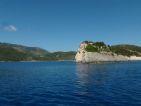 Al doblar el cabo Skotariá, Sarakiniko, podemos ver los detalles de las rocas que forman los acantilados del mismo.
Al doblar el cabo Skotariá, Sarakiniko, podemos ver los detalles de las rocas que forman los acantilados del mismo.








